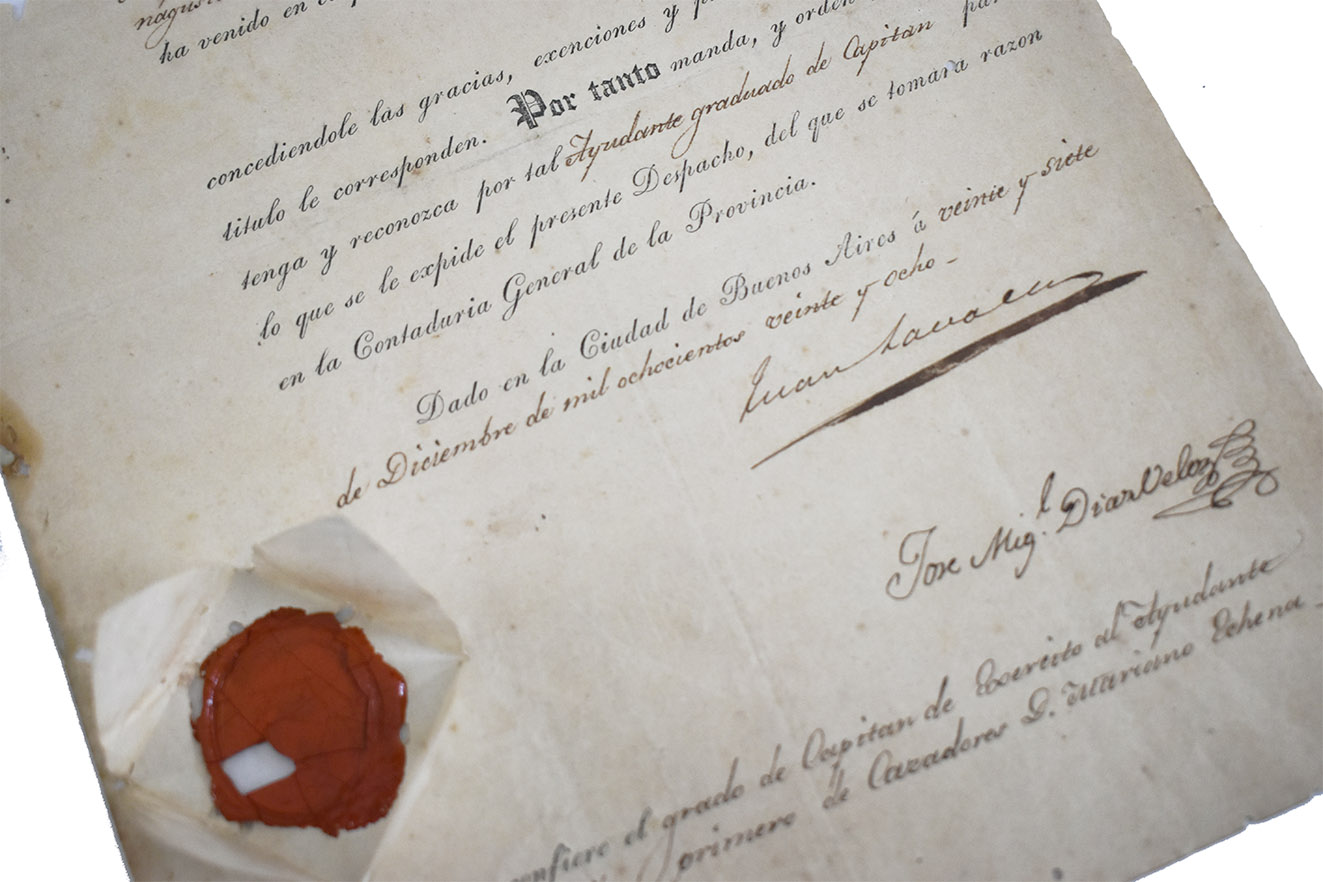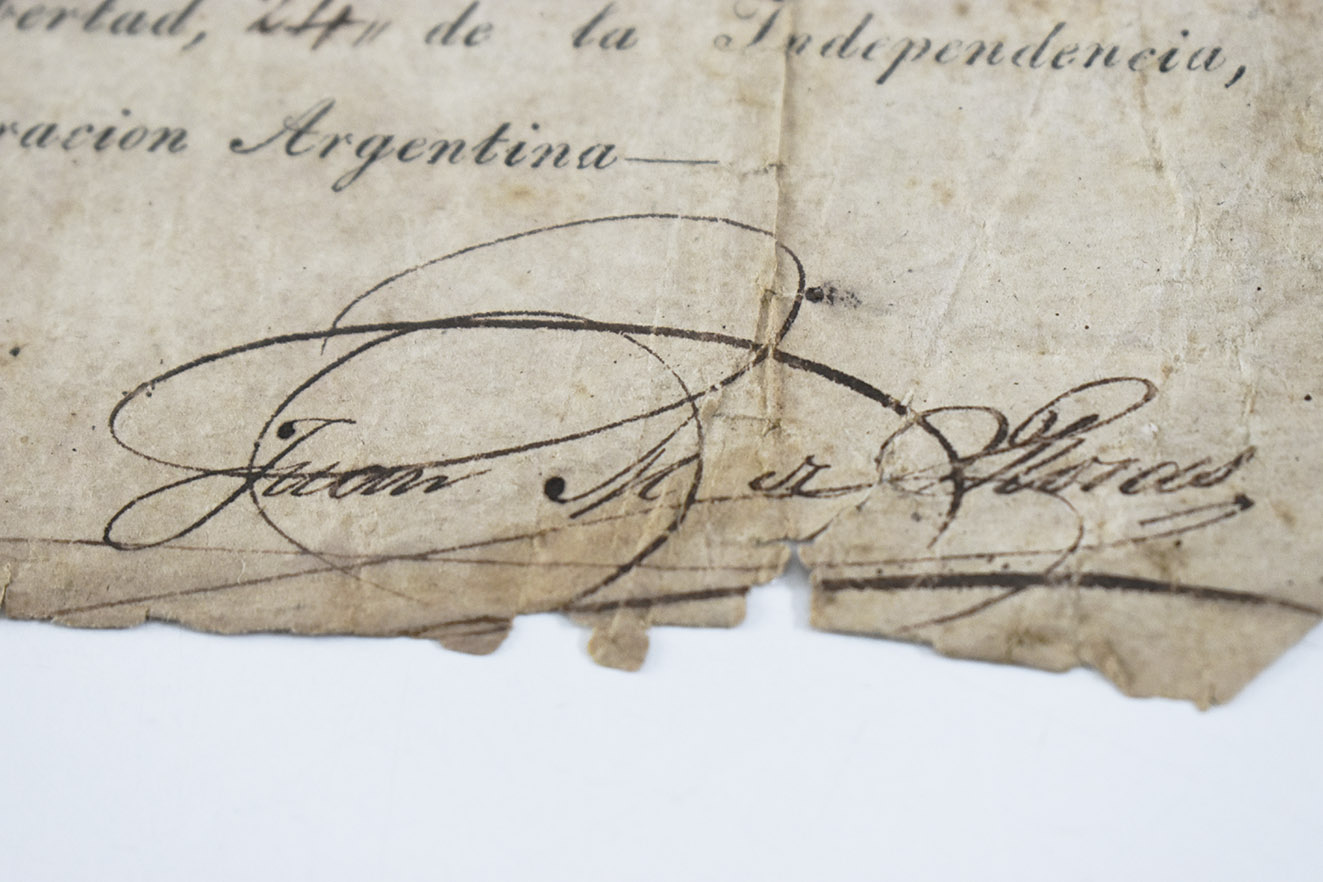Family archives sometimes hold surprises for us. Forgotten, scattered, poorly kept papers describe traces and paths, loves and disagreements, the travels of a “bon vivant” uncle or those of the family who were left to “dress saints.” They can also tell us about times of fat cows… and lean ones. Written by who or who? So that? But apart from these microhistories, if we know how to read between the lines and in the light of specialists in the field, it will be possible to discover political, social, and economic memories. Papers that sustain the “pulse” of history.
Letters, prints, photographs, medals, and other documents were kept within the Álvarez family for several generations. Ten years ago, Dr. Matías Álvarez Colombres, aware of the importance of the material of which he was in possession, summoned the museum conservator, Gloria Sánchez Almeyra to catalogue, stabilize and carry out conservation guards for each of the pieces of this unique set. Thus, around four hundred pieces were counted, mainly correspondence between Nicolás Álvarez and Justina Rodríguez from the end of the 19th century and the first decades of the 20th. The protagonists talk about personal issues and others related to the founding process of Pueblo Álvarez in southern Santa Fe (July 7, 1890). Since 1806, Justina's family was the owner of the “San Antonio” ranch, of just over 7,000 hectares. This site was the first to be populated in the Saladillo Sur district, belonging at that time to the Pago de los Arroyos Party. The population was limited to the country house where the Rodríguez couple lived, along with their servants and day laborers. Justina married Nicolás María Álvarez; young man from the city of Rosario. On April 7, 1887, Nicolás died at the age of 52, leaving the young widow at the head of the family, who decided to found a town accompanied by her son Bernardino, initiating the corresponding procedures before the government of Santa Fe. The fact of having occupied this territory since the first years of the 19th century means that we find some documents that date immediately after the May revolution. As we see, the great time frame in which this family acted and the preponderant position they occupied made them linked to prominent figures in our national history. Thus, signatures of the stature of Estanislao López, Juan Lavalle, Juan Manuel de Rosas, Justo José de Urquiza, Juan Bautista Alberdi and Julio Argentino Roca, among others, appear.
A decade passed since Matías and Gloria were in charge of bringing light to this material, until last Monday, January 15, the Peyrano Communal Museum was the depository of this outstanding donation of documents that transcend the private sphere to become public.
Document with the signature of Estanislao López, “Governor of the Province (of Santa Fe) and General of the Convinado Army (sic)”. Photography: Courtesy Peyrano Communal Museum.
In the words of his donor: “For me there are no doubts. What one has collected, inherited, or had through some history of one's family that may be of general interest for study, research, I believe has to be available to people. I consider that things are not yours to the extent that you do not use them. The decision is clear: this can be beneficial to study the customs of the time, historical, political, economic and cultural moments. And why the Peyrano Museum? This is not minor. First because I knew them, who they worked for, the seriousness in terms of the quality of work they carried out, the proposals and challenges that the Peyrano Museum has always taken and the time that the museum was actively and permanently supported. “This was what motivated me to have the material go to Peyrano.”
The Peyrano Museum, which for more than thirty years has been creating a rich collection with strong local and regional roots, undoubtedly one of the most important and recognized in the south of Santa Fe, adds an unexpected and unmatched donation. The entry of this Documentary Fund allows us to bring national history to our closest environment, evidencing founding processes of towns similar to those of our town.
It is worth mentioning that the museum already had the Documentary Fund of the Peyrano Family, the Rodríguez Álvarez and the Peyrano Bett, families that inhabited the same geographical space, families that founded towns, with analogous political and social relationships. These public archives (along with others that the museum preserves) are now available to specialists who can use them as sources for their research, because, to repeat the words of the donor, “things are not yours to the extent that you do not use them.” . And also, available to the entire community, who will see them in future temporary exhibitions.
Welcome then to collectors and owners of pieces who think of a public museum open to the community as the final depository of their goods.
* Special for Hilario. Arts Letters Trades


